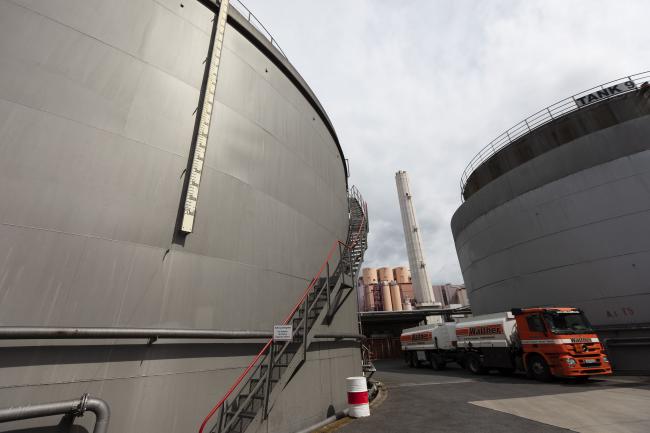(Bloomberg) -- Oil fell for a second day on indications American crude stockpiles and shale output will keep expanding, while investors wait for a breakthrough in U.S.-China trade talks.
Futures declined as much as 1.6% in New York to their lowest since Nov. 8. U.S. oil inventories probably rose by 1.5 million barrels last week, according to a Bloomberg survey before government data on Wednesday, while shale output at major fields is expected to increase next month. Markets are also being pressured by the impasse in trade discussions between the U.S. and China.
The ebb and flow of trade talks between Washington and Beijing has weighed on oil prices, which have fallen around 15% from an April peak. While negotiators held “constructive discussions” over the weekend, CNBC reported on Monday that China is pessimistic about reaching a deal due to President Donald Trump’s reluctance to roll back existing tariffs.
“The uptrend from early October is being challenged as the market seems to have run out of supporting news,” said Ole Sloth Hansen, head of commodities strategy at Saxo Bank A/S in Copenhagen. “The U.S.-China trade deal remains elusive.”
West Texas Intermediate for December delivery fell as much as 90 cents, or 1.6%, to $56.15 a barrel on the New York Mercantile Exchange, trading for $56.28 as of 8:52 a.m. local time. Prices settled at their highest in almost eight weeks on Nov. 15. The front-month contract will expire on Wednesday.
Brent for January settlement slid 73 cents to $61.71 a barrel on the London-based ICE (NYSE:ICE) Futures Europe Exchange, after losing 1.4% on Monday. The global benchmark crude traded at a $5.32 premium to WTI for the same month.
See also: Commodity Shippers Are Struggling to Obtain 2020-Compliant Fuel
U.S. crude stockpiles are at the highest level in four months. If official government data confirm the forecast increase in inventories, it would be the fourth weekly advance.
Output at major American shale fields will climb by 49,000 barrels a day to 9.13 million a day in December, according to a drilling report from the Energy Information Administration. The EIA boosted its estimates for November’s shale output to 9.08 million barrels a day from 8.97 million.
“The EIA’s latest drilling report gave the market a bit of a punch to the stomach,” Hansen said. “In recent weeks the focus on a potential slowdown in the U.S. production has supported the market. Just the fact it was an increase was enough to dent the positive price impact otherwise seen recently.”

